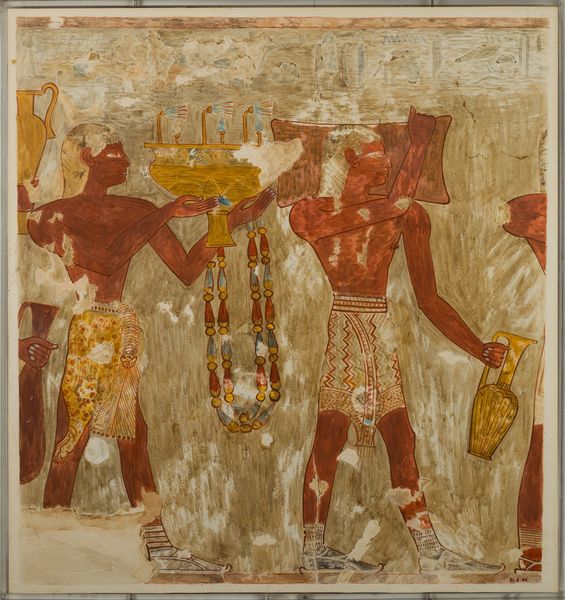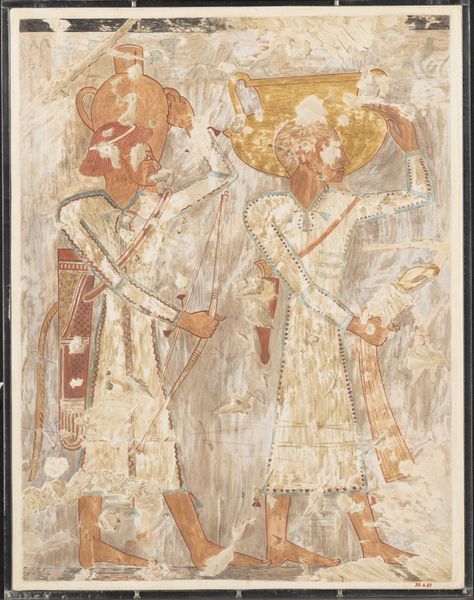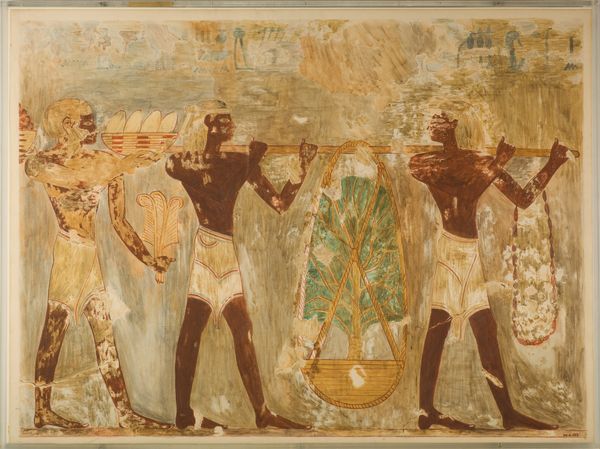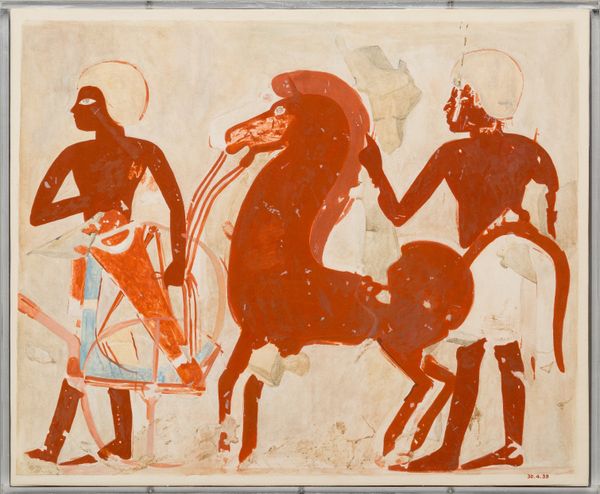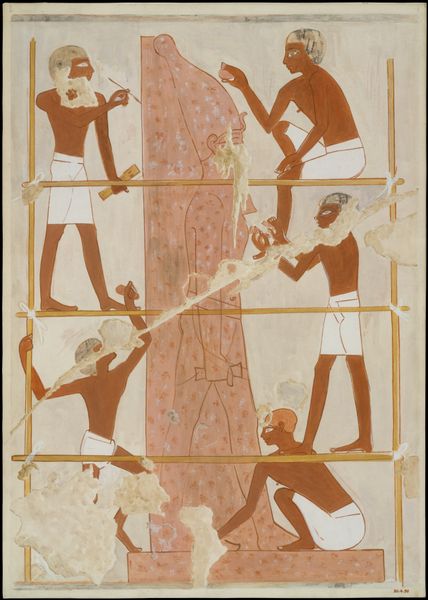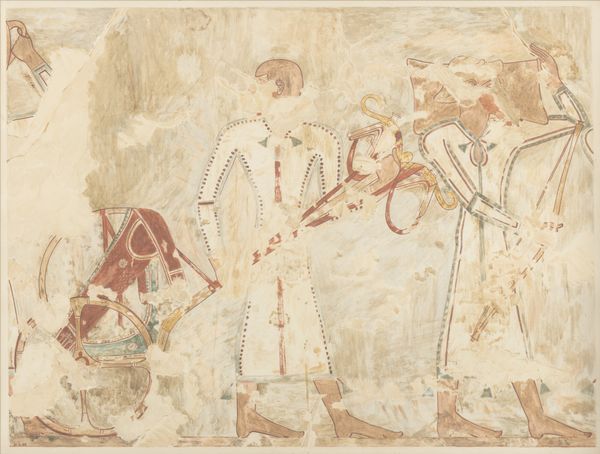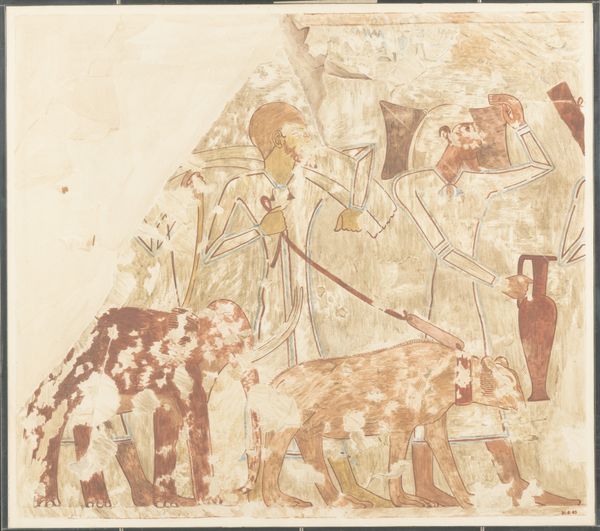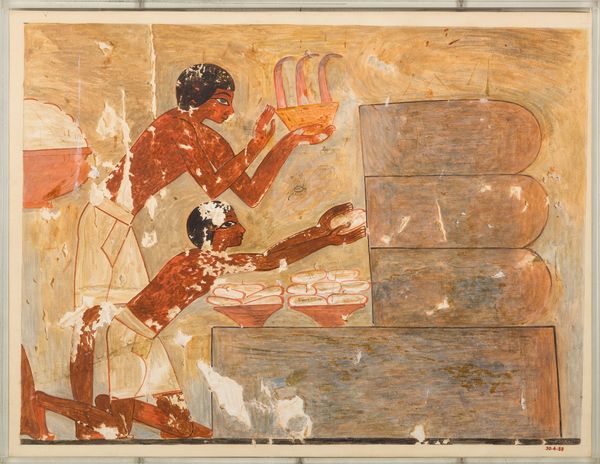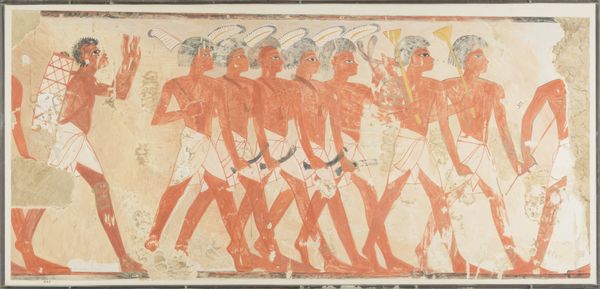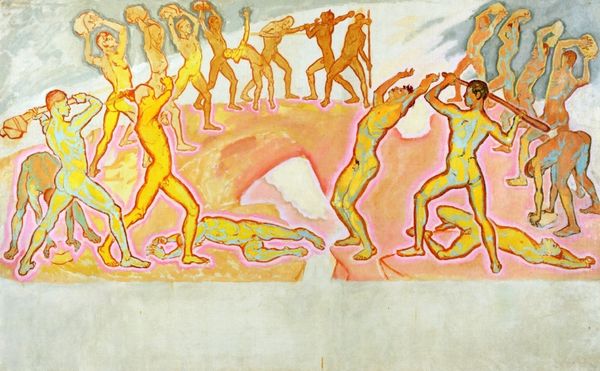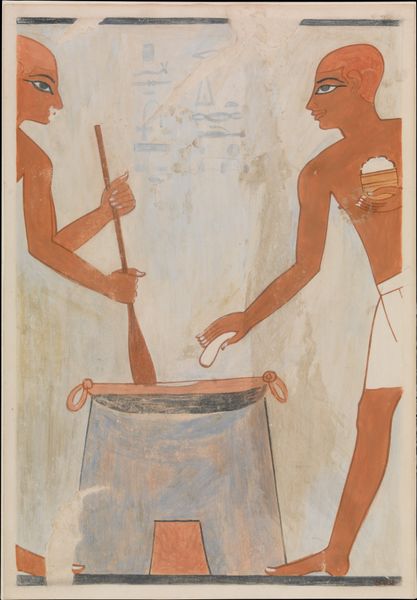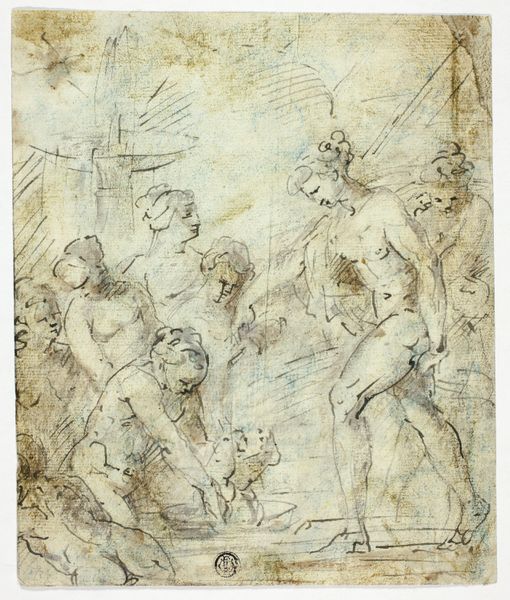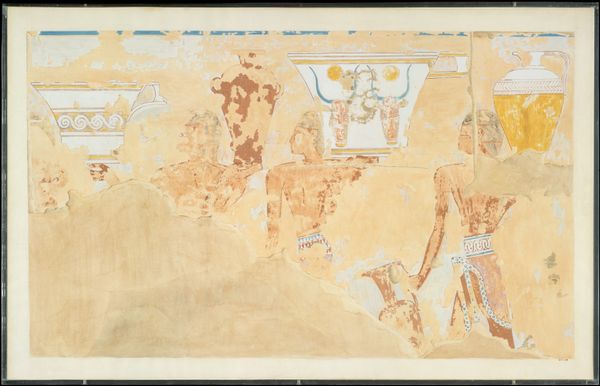
fresco
#
narrative-art
#
landscape
#
ancient-egyptian-art
#
figuration
#
fresco
#
ancient-mediterranean
#
history-painting
Dimensions: facsimile: h. 42 cm (16 9/16 in); w. 45.5 cm (17 15/16 in) Scale 1:1 framed: h. 48.4 cm (19 1/16 in); 45.7 cm (18 in)
Copyright: Public Domain
Curator: This is Nina de Garis Davies’ watercolor reproduction of "Aegean Islanders in the Tomb of Rekhmire" dated 1479 BC. The original is a fresco and can still be found in the tomb, with this rendering held at The Met. Editor: Ah, the light. Even in this rendering, I can feel the heat baked into the walls of some long-lost palace. Makes you wonder what it smelled like back then, doesn’t it? Curator: The figures certainly hold clues. As a visual record of diplomatic exchange, this scene provides insight into cultural interaction during the Egyptian New Kingdom. Observe their garments, the ornate patterns—unique signifiers from the Aegean region, a marked contrast from typical Egyptian attire. The objects they carry denote tribute, things the Egyptians would've highly prized. Editor: Like liquid sunshine… That gold jug and those slender vases give off major trophy vibes! I guess the point isn’t necessarily their practical use. The power dynamics at play seem pretty straightforward: "We have the goods and you, well, don't.” I find the relative realism compelling here. These figures don't quite align with those canonical, flat profiles one expects. Curator: Indeed, these stylistic differences indicate cross-cultural recognition. By accurately depicting foreign visitors and their items, the Egyptian artisans not only celebrated Rekhmire's power but also subtly acknowledged the distinctive cultures present. These islanders may not be Egyptian, but that doesn't mean their contributions—or threat—went unacknowledged. Even their hairstyle stands apart, which for me suggests they wanted to make sure they would be recognized. Editor: The artist clearly relished this "spot the difference" moment. A clever move to flex Egyptian wealth without sounding too pompous. And yes, their elaborate patterns versus the simple ochre is like turning up the saturation. It’s eye-catching. This scene would be like a peek at National Geographic. Very different and alluring. Curator: In that case, perhaps Nina de Garis Davies succeeds at fulfilling a similar aim by rendering this tomb. She delivers it to us as clear and present as possible so we might read its symbols, too. Editor: Exactly! Preserved across centuries, so we, too, might bear witness. Amazing!
Comments
No comments
Be the first to comment and join the conversation on the ultimate creative platform.
